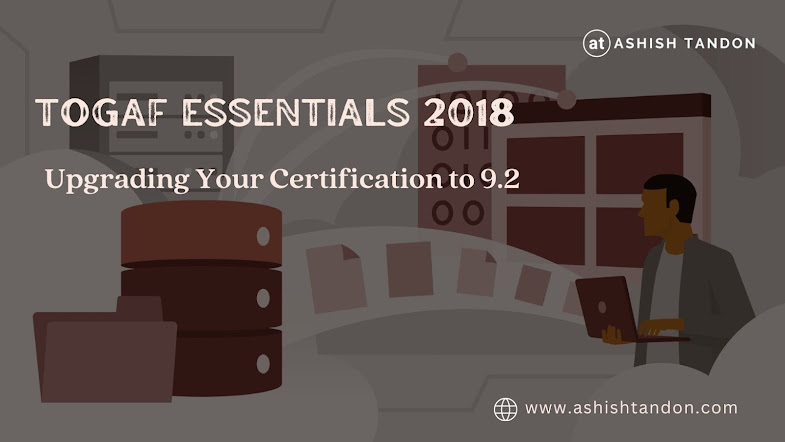TOGAF 10: A Simple Guide to Understanding the Latest Enterprise Architecture Framework
For enterprise architecture, the Open Group Architecture Framework, or TOGAF, is a widely accepted standard. It offers businesses an organized method for creating, organizing, implementing, and managing their IT architecture. In order to keep up with the rapidly changing technical landscape, TOGAF has developed throughout time. The most recent version, TOGAF 10, adds new features, enhancements, and updates to assist businesses in better coordinating their IT strategy with their overarching business objectives.
We will discuss the features, advantages, and importance of TOGAF 10 for enterprises looking to optimize their IT infrastructure in this tutorial.
What is TOGAF 10?
The most recent iteration of the TOGAF framework, TOGAF 10, offers enterprise architects new best practices, tools, and guidelines. It assists businesses in creating an enterprise architecture that supports their goals, lowers expenses, boosts productivity, and improves overall performance.
Building on the fundamental ideas of earlier iterations, TOGAF 10 emphasizes inclusion, flexibility, and adaptation. It offers more thorough instructions, updated content, and terminology on a range of subjects, including cloud-based architectures, Agile approaches, and digital transformation.
Key Benefits of TOGAF 10
1) Enhanced Flexibility and Adaptability:
TOGAF 10 provides a more adaptable method for creating and overseeing enterprise architecture, which facilitates enterprises' ability to adjust to evolving business landscapes and cutting-edge technology. It enables companies to tailor the architecture development process to their particular requirements.
2) Enhanced Advice for Digital Transformation:
TOGAF 10 offers more thorough advice on how to incorporate digital strategies into enterprise architecture as digital transformation becomes more and more important for organizations. This covers big data, cloud computing, the Internet of Things, and other contemporary technologies that propel digital transformation.
3) Accordance with Agile and DevOps Practices:
TOGAF 10 recognizes the increasing significance of Agile and DevOps approaches in the current IT environment. It contains fresh content that supports these methodologies, assisting businesses in fusing Agile development with conventional enterprise design to provide IT solutions more quickly and effectively.
4) Greater Emphasis on Communication and Collaboration:
TOGAF 10 highlights the value of efficient communication and collaboration throughout various departments, teams, and stakeholders. It offers additional helpful guidance on improving communication to make sure that all parties engaged in the architectural process are in agreement.
5) Improved Compatibility with Cloud-Based Architectures:
TOGAF 10 offers improved recommendations for incorporating cloud services into an organization's enterprise architecture, as more and more enterprises shift to the cloud. This guarantees a smooth move to cloud settings and aids businesses in making better use of cloud-based products.
New Features and Enhancements in TOGAF 10
1) Modular Structure:
One of TOGAF 10's key innovations is its modular structure, which divides the framework into easier-to-manage chunks. Because of this, it is simpler for businesses to embrace the framework's most essential sections.
2) Revised vocabulary and material:
TOGAF 10 incorporates revised vocabulary and material that aligns with contemporary industry norms and practices. This entails improved terminology, more accurate definitions, and improved instructions for utilizing the framework in diverse contexts.
3) Extended Guidance on Enterprise Architecture Domains:
The Business, Data, Application, and Technology architecture domains are covered in greater detail in TOGAF 10. Additionally, it provides fresh perspectives on developing architectural patterns and styles, assisting enterprises in navigating the complexity of contemporary IT systems.
4) Emphasis on Security and Risk Management:
TOGAF 10 contains improved content on security architecture and risk management in response to the growing prevalence of cybersecurity threats. It gives businesses the instruments and methods required to create robust and safe structures.
Why Should Organizations Adopt TOGAF 10?
Businesses can gain from a more formal approach to enterprise architecture that synchronizes IT plans with business objectives by using TOGAF 10. Better decision-making, lower expenses, and increased performance all benefit from this. Because of its emphasis on adaptability, teamwork, and contemporary technology, TOGAF 10 is a useful tool for businesses trying to manage the challenges of digital transformation and maintain their competitiveness in the current fast-paced business climate.
Furthermore, the IT industry holds TOGAF accreditation in high respect. Experts with knowledge of TOGAF 10 are in great demand since businesses need assistance implementing corporate architectures that are both successful and efficient.
Conclusion
A strong, updated framework called TOGAF 10 gives businesses the advice, best practices, and instruments they need to create and maintain a solid enterprise architecture. TOGAF 10 assists organizations in achieving their strategic objectives and adjusting to the constantly changing technology landscape with its emphasis on flexibility, digital transformation, and cooperation. Adopting TOGAF 10 is a smart move for companies who want to improve their IT infrastructure and match it with their business goals.


Comments
Post a Comment